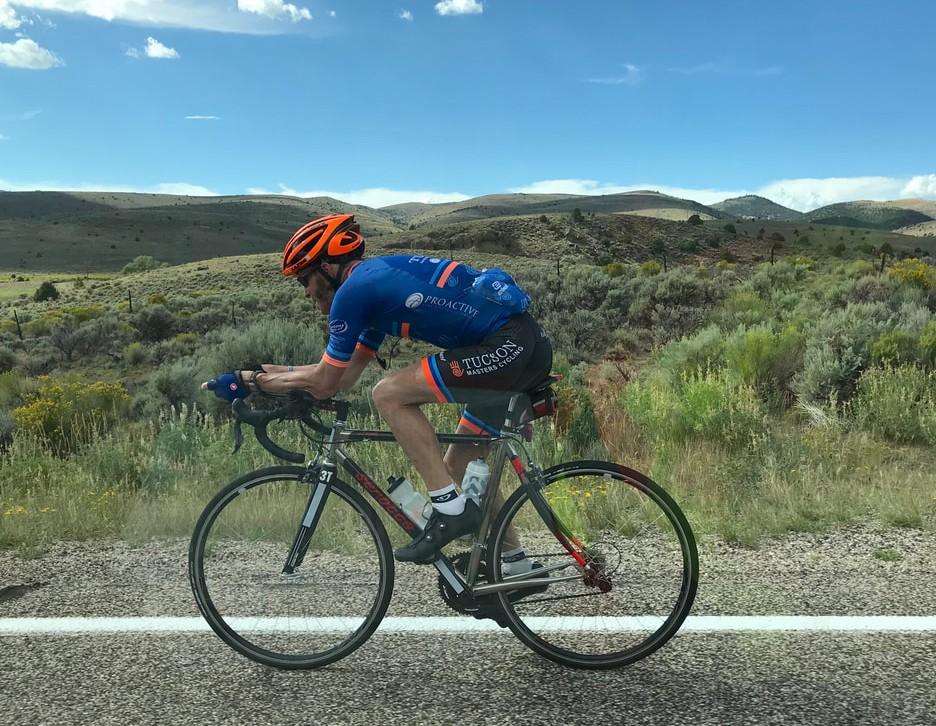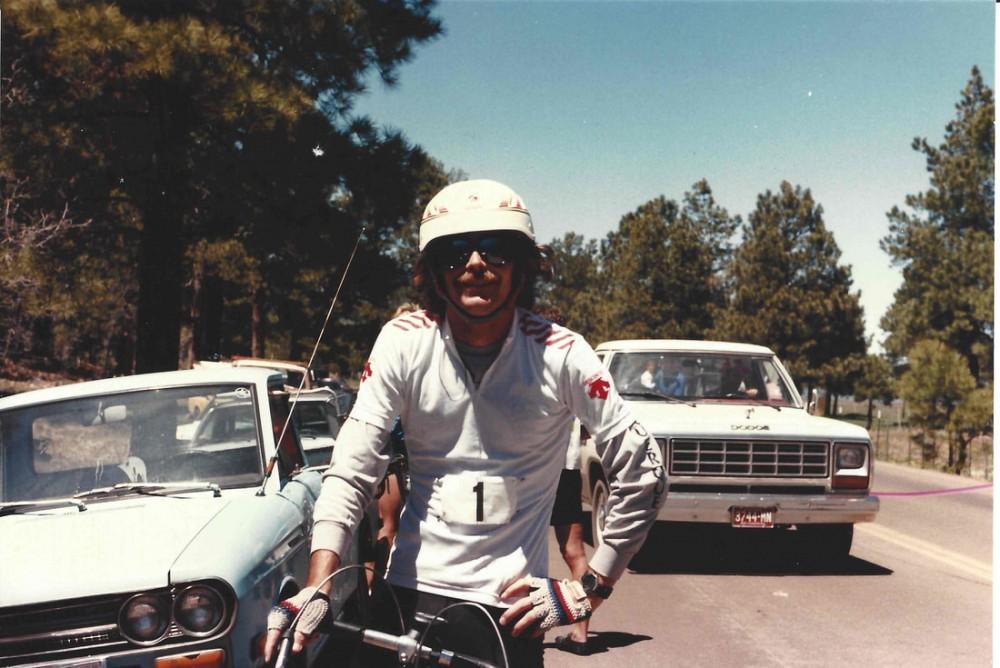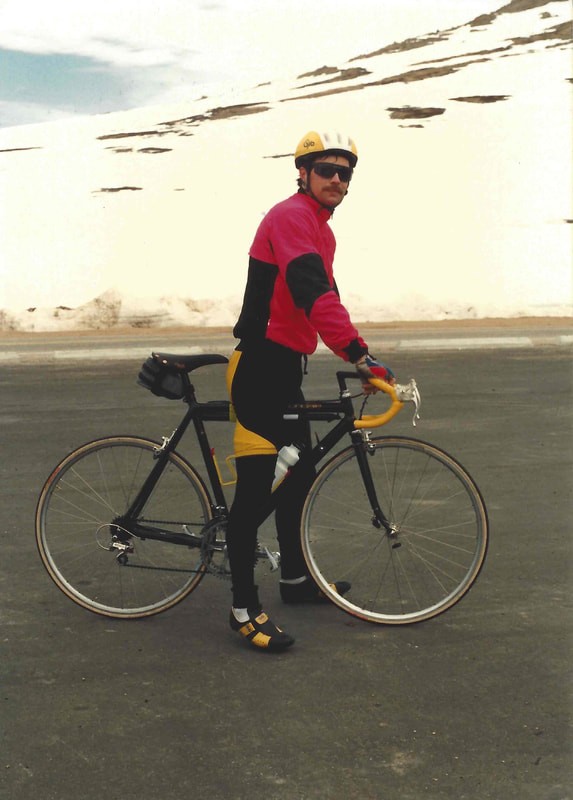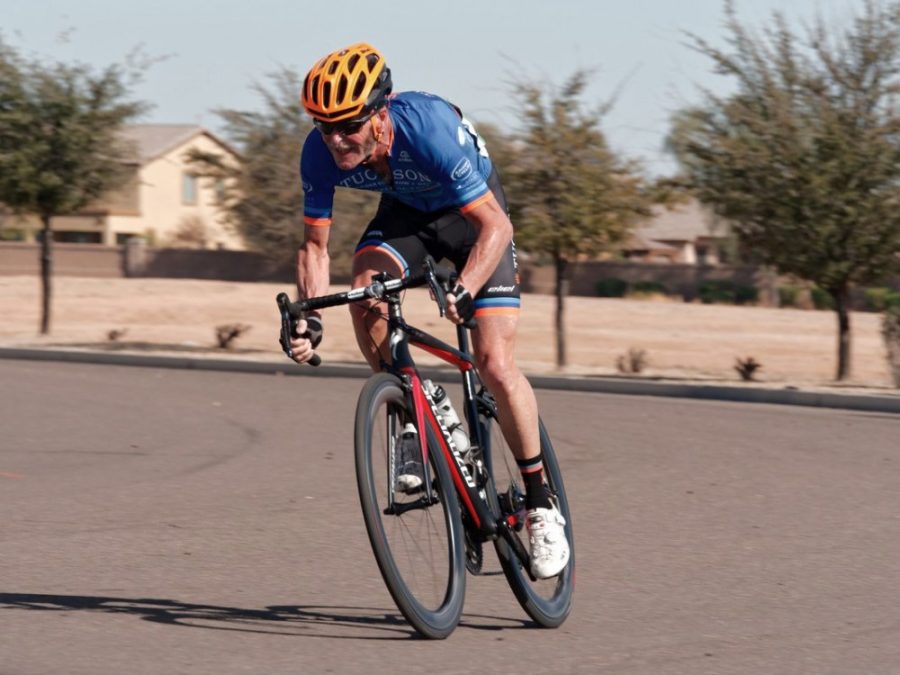Competitive cyclist and University of Arizona professor of astronomy Eric Pearce has challenged himself to finish one of the biggest cycling tournaments in the country in just three and a half days.
Beginning in Oceanside, Calif., and ending in Durango, Colo., the Race Across the West is the second-longest qualifying race for Race Across America, or RAAM — three to four days of near-constant cycling over 930 miles, through four states and two time zones. The diverse terrain is unparalleled in any other qualifier.
Pearce remembered seeing RAAM on television while in college, but said he believed it was out of his league. A race of that magnitude seemed “too outrageous”.
RELATED: TSC seeks to give transfer students the full UA experience
“Then I got older and realized it really wasn’t that outrageous. I could do it,” Pearce said. “I better hurry up and do it because very few people over 60 have finished RAAM. If I’m going to finish RAAM, I need to start now.”
Pearce has undergone major physical and mental challenges preparing for RAW.
For the past year, Pearce has been waking up at 4 a.m. and riding about 400 miles every week. He plans to add another ride every weekend, resulting in three back-to-back rides in a span of two days.
It’s difficult, Pearce said, but an essential part of his training. During RAW, Pearce and other cyclists will be sleeping about two hours each day, if that.

“People have fallen asleep, fell right off their bike or ride off the road,” Pearce said.
Another critical facet of training for a multi-day race is altering diet, according to Pearce. With the support of his crewmate and nutrition sponsor Maria Crawford, Pearce has been including more fat and calories in his diet.
According to Pearce, he has to eat 500 calories every hour during RAW, so he has trained his stomach to tolerate that while still cycling.
“If you dig a hole, it’s hard to get out of. If you don’t eat enough on day one, you may never recover,” Pearce said.
During RAW, Pearce is required to have a crew compiled of his close friends and colleagues as a “safety mechanism”.
RELATED: SAACA, Compost Cats team up to put on 6th annual SAVOR Food and Wine Festival
“It’s a big ask from your friends, to take five days out of their lives to follow you down the road at 18 miles an hour,” Pearce said. “I will thank them profusely for that.”
The crew is required to follow Pearce at night in a car with lights and signs. During the day, they offer “leapfrog” support. Among them is Pearce’s wife and crew chief Cathy Pearce.
According to Cathy, crewing is a lot of work. They sleep in odd places and have to take care of themselves as well as Pearce, but it’s rewarding.

“You can’t do this race alone. You need a lot of support along the way,” Cathy said. “I worry about him, but you have to follow your passions and not let worry hold you back.”
As an astronomer, Pearce’s favorite part of his job is the relationship between man, nature and technology. He loves working with big equipment and trekking through snowy mountain to bring heavy equipment to some of the biggest telescopes in the world. In that way, cycling is a lot like astronomy.
“[Cycling] combines a very simple machine with a pretty complicated sport,” Pearce said. “There is the sheer fitness of it. It involves a lot of strategy, accounting for pacing and weather. The subtleties of teamwork. It’s a thinking man’s sport.”
According to Pearce, cycling offers a lot of time to think, especially during multi-day races. After a while, the long days don’t bother him all that much — he makes the most of them. He has written entire pages of astronomy papers in his head while cycling.
“[During a 300-mile race last year], there were these five wonderful hours after dark where you just lose the sense of time, the sense of distance, because it’s night and you can’t see very far anyway,” Pearce said. “The time just clicks by.”
He believes he found something worthwhile in athletics that translates into his work and home life. Athletics, he said, builds character and offers the rare opportunity to truly learn from one’s mistakes.
“Working for anything to perform at the elite level, you learn a lot of skills along the way that help with everything else in your life,” Pearce said. “When you learn those lessons in your career, there are real consequences for that, but when you learn them in sport, it’s a rehearsal.”

Cathy has seen the changes in Pearce over the past year and, as a competitive runner, understands the wisdom that elite athletics can bestow.
“It’s a big challenge,” Cathy said. “Any challenge brings confidence to handle challenging situations in life.”
There are easier ways to qualify for RAAM than taking on RAW, Pearce said. It is possible to enter RAAM through shorter ultracycling races, but this journey was never just about qualifying.
Pearce wants to experience something that feels “like a real step towards RAAM”. Pearce said he wants to prove to himself that he really can take on RAAM, and he cannot wait to see so much of the world while doing it.
“It’s a great way to see the country, at 18 miles per hour,” Pearce said.
Follow the Daily Wildcat on Twitter















